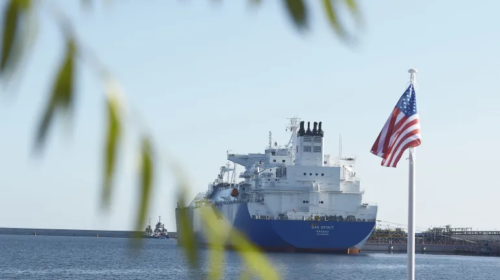As European LNG buyers are snapping up cargoes from the United States in a race to replace Russian pipeline deliveries, America has become a major supplier to Europe, and its sales to China have dwindled to just a few cargoes shipped so far this year. Chinese imports of LNG from the U.S. plunged by 95% between February and April compared to the same period in 2021. Meanwhile, Chinese imports of LNG from Russia jumped by 50%, according to Chinese customs data cited by The Wall Street Journal.
That’s a major shift in U.S. LNG shipments to China. The United States was the largest supplier of spot LNG volumes to China last year, the EIA said last month.
So far this year, the United States has sent the occasional LNG cargo to China, but most exports have headed to Europe, which is paying more for spot LNG supply.
In April 2022 alone, five European countries—France, Spain, the UK, the Netherlands, and Poland—accounted for 54.1% of total U.S. LNG exports, data from the U.S. Energy Department showed last week.
The European Union and the UK saw a record high level of LNG imports in April, as higher spot prices in Europe compared to Asia attracted suppliers with destination flexibility to ship LNG to Europe. Those suppliers were mostly from the United States, the EIA said earlier this month.
The Russian invasion of Ukraine and Europe’s resolve to kick its Russian energy addiction are changing global energy flows, not only in oil but also in gas.
Europe is pricing out Asia for spot deliveries and is turning to LNG, mostly from America, to cut its still heavy dependence on Russian gas. At the same time, China is buying more LNG from Russia, which the West doesn’t want to touch. High spot LNG prices and lackluster demand due to China’s zero-COVID lockdowns have significantly reduced Chinese appetite for U.S. LNG this year.
Related: India’s Top Refiner Sees Oil Staying Above $100 This Year
Yet, scarce LNG imports from the U.S. in China will not persist for years to come because Chinese state majors and other energy firms have been signing long-term deals with American exporters in recent months. Some of those LNG deliveries will begin as soon as 2022 and 2023.
Nevertheless, the global energy trade flows are changing, and they are changing for good. Europe will not return to Russian energy and is on an irreversible path to cut off dependence on Russia’s oil and gas, sooner for oil than for gas.
Banned, sanctioned, and shunned in the West, Russia is now looking East to sell its energy. Analysts warn, however, that Russia—having no other choice—could become too dependent on China, especially for its gas sales. Moreover, the pipeline and LNG volumes Russia is sending to China are just a fraction of Russian pipeline exports to Europe, even as Russia has slashed gas supply to Europe in the past weeks.
Russia is already sending natural gas via pipeline to China through the Power of Siberia pipeline, which became operational at the end of 2019. There are plans for another major gas pipeline to deliver gas from Russia to China, but this will take years to complete and commission.
The European gas market remains far bigger and far more lucrative, says Nikos Tsafos, the James R. Schlesinger Chair in Energy and Geopolitics at the Energy Security and Climate Change Program at the Center for Strategic and International Studies (CSIS).
“Russia could eventually build a sizable business geared toward Asian markets, but the shift will be neither immediate nor easy, and it will depend critically on foreign partners, including China,” Tsafos wrote in an analysis last month.






